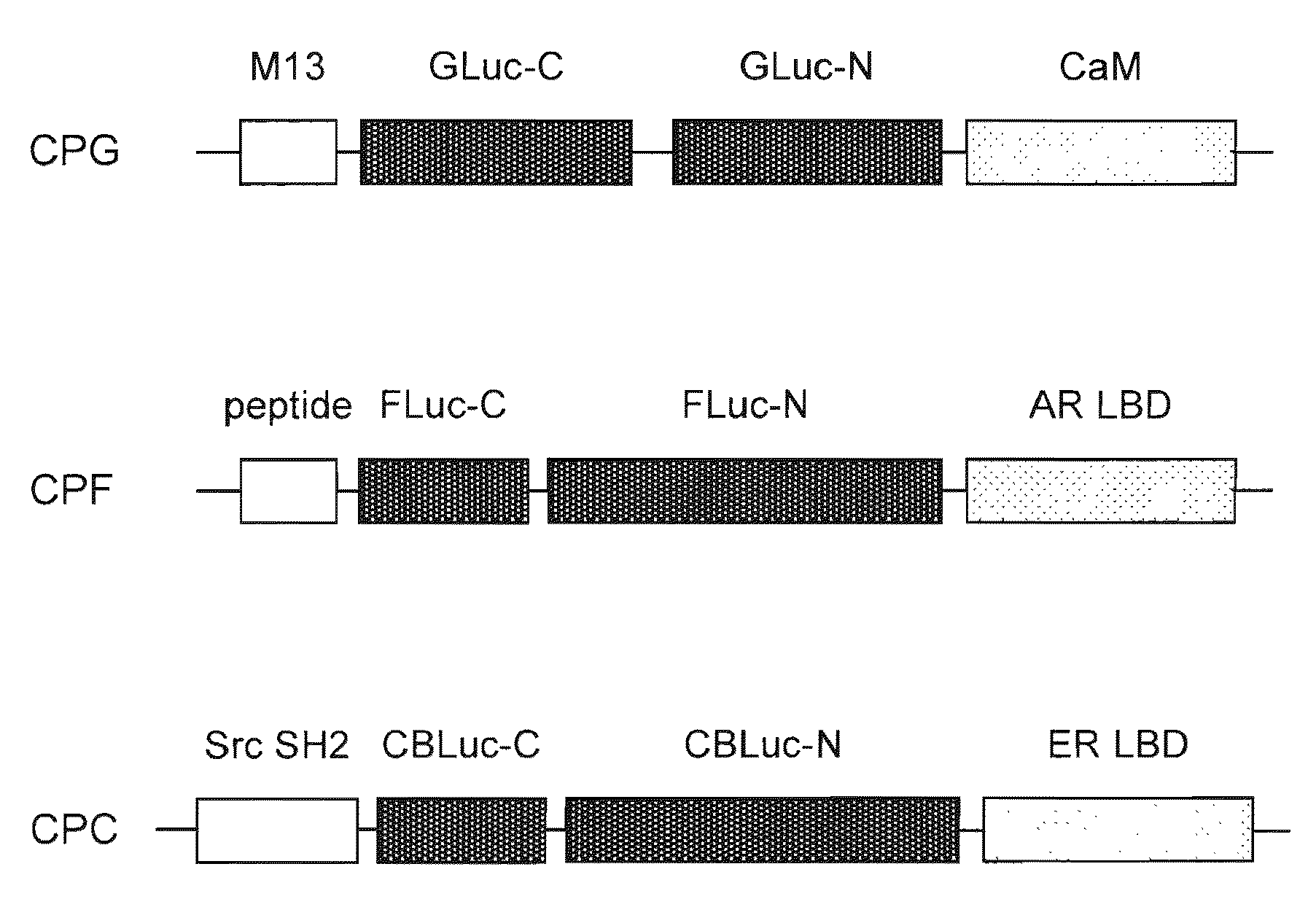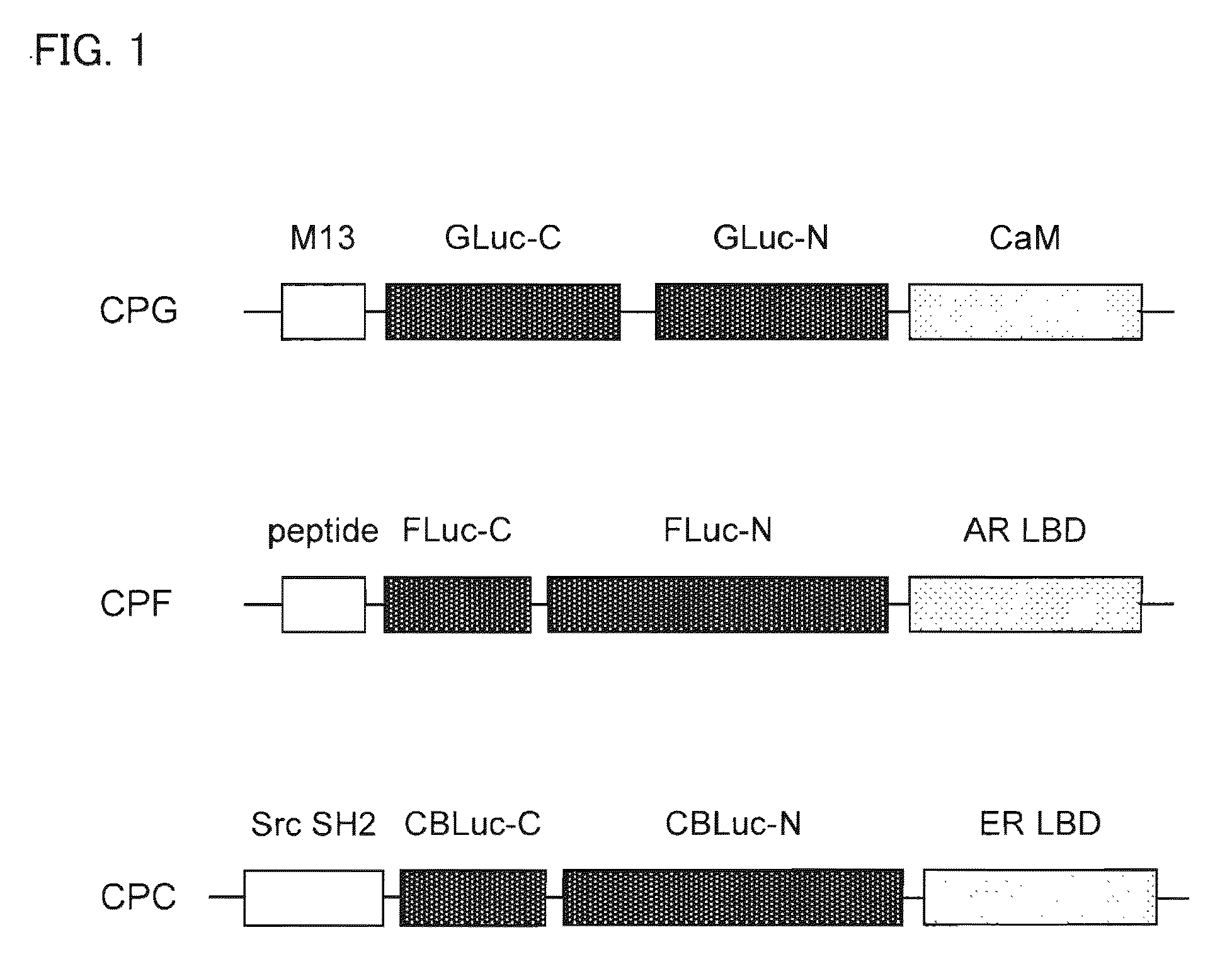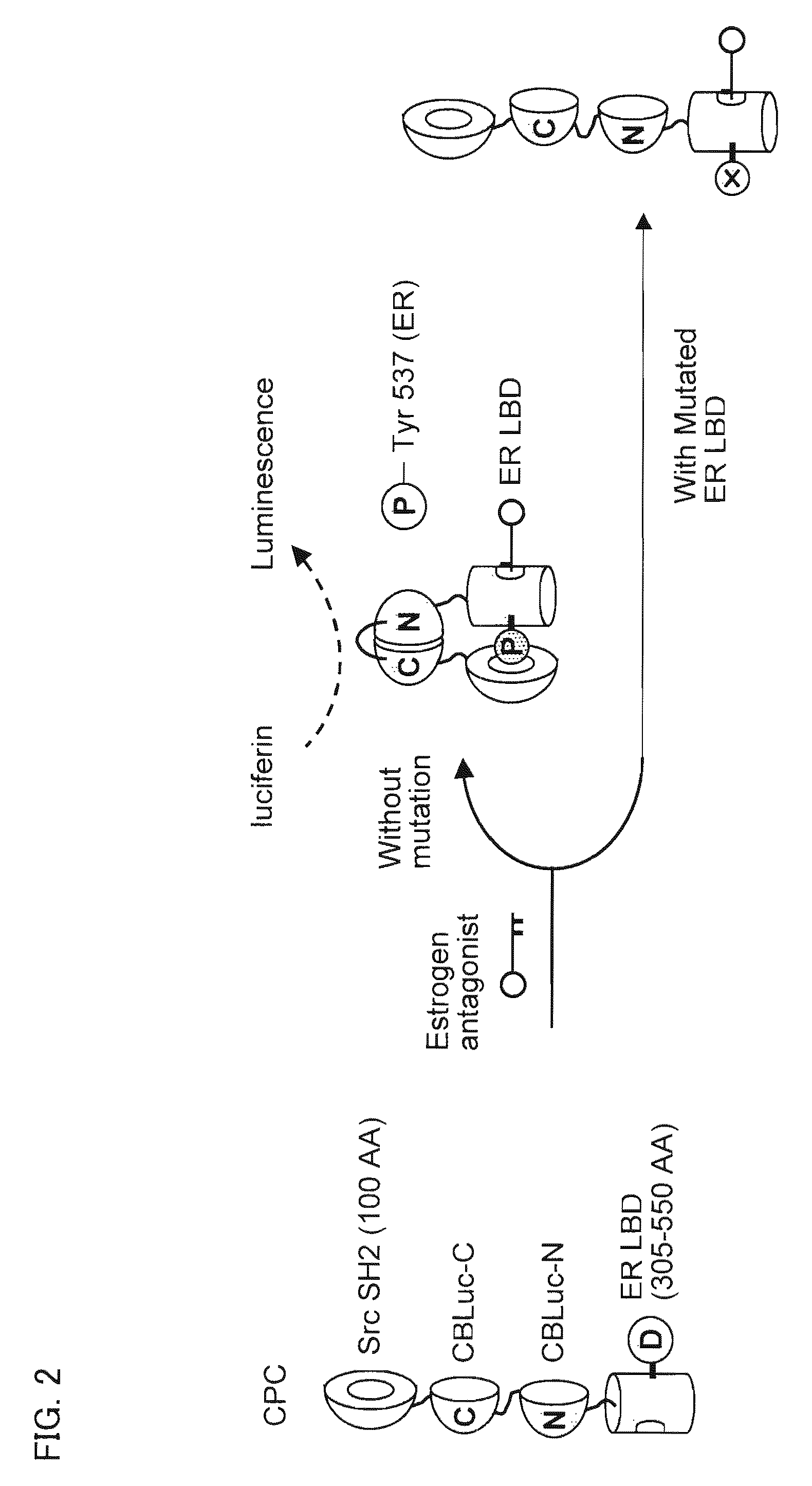Single-Molecule-Format Probe And Utilization Thereof
a single-molecule, probe technology, applied in the direction of instruments, transferases, enzyme stabilisation, etc., can solve the problems of affecting the detection efficiency of fluorescent proteins, the difficulty of circular permutation, and the inability to perform circular permutation, so as to suppress the background enzyme activity and high sensorial efficiency
- Summary
- Abstract
- Description
- Claims
- Application Information
AI Technical Summary
Benefits of technology
Problems solved by technology
Method used
Image
Examples
example 1
Plasmid Construction
[0208]The respective cDNA fragments consisting of circularly permutated probes were generated by the polymerase chain reaction (PCR) to introduce each unique restriction site at each end of the fragments using adequate primers and templates. For example, a plasmid carrying Yellow Cameleon-3.1 (YC3.1) donated by Dr. Miyawaki was utilized for amplifying Xenopus laevis calmodulin (CaM) in PCR as a template (see Non Patent Literature 4). The specific restriction enzyme recognition sites were summarized in FIG. 5.
[0209]The restricted cDNA fragments were then ligated as shown in FIG. 5 and subcloned into the pcDNA 3.1(+) (Invitrogen). The plasmids were respectively named pCPC (cpCBLuc probe), pCPF (cpFLuc probe), and pCPG (cpGLuc probe), according to the kind of the luciferases circularly permutated in the probes. The probes expressed in the plasmids may be called CPC, CPF, CPG, respectively.
[0210]In addition, the cDNA of ligand binding domain of estrogen receptor (ER ...
example 2
Cell Culture and Transfection
[0214]COS-7 cells derived from African green monkey kidney were raised on a 24-well plate with Dulbecco's modified eagle's medium (DMEM; Sigma) supplemented with 10% steroid-free fetal bovine serum (FBS) and 1% penicillin-streptmycin (P / S) at 37° C. in a cell incubator maintaining 5% CO2 (Sanyo). The COS-7 cells were transiently transfected with pCFG, pCPF, or pCPC (0.2 μg per each well) using a plasmid transfection reagent, TransIT-LT1 (Mirus). The cells were extensively incubated in the 5% CO2 incubator for 16 hours.
example 3
Comparison of Relative Luminescence Intensities by CPC, CPF, or CPG
[0215]The relative luminescence intensities by CPC, CPF, or CPG were compared in the presence or absence of the ligand. The results are shown in FIG. 7.
[0216]First, the COS-7 cells carrying pCPC or pCPF were stimulated with 10−6 M of 4-hydroxy tamoxifen (OHT) or 5α-dihydroxytestosterone (DHT) (final concentration). The luminescence intensities were developed with a Bright-Glo substrate solution (Promega), and integrated for 15 seconds with a luminometer (Minilumat LB9506; Berthold). The brief procedure for the use of the Bright-Glo substrate solution is as follows.
[0217]The mammalian cells were washed once with PBS 20 minutes after stimulation with ligand. A 40 μL of the substrate (D-leuciferin) solution was added to each well of the plates. Three minutes after substrate addition, the plate was tapped gently, and the subsequent cell lysates were transferred to a test tube for determining the luminescence intensities....
PUM
| Property | Measurement | Unit |
|---|---|---|
| diameter | aaaaa | aaaaa |
| enzyme activity | aaaaa | aaaaa |
| luminescence intensity | aaaaa | aaaaa |
Abstract
Description
Claims
Application Information
 Login to View More
Login to View More - R&D
- Intellectual Property
- Life Sciences
- Materials
- Tech Scout
- Unparalleled Data Quality
- Higher Quality Content
- 60% Fewer Hallucinations
Browse by: Latest US Patents, China's latest patents, Technical Efficacy Thesaurus, Application Domain, Technology Topic, Popular Technical Reports.
© 2025 PatSnap. All rights reserved.Legal|Privacy policy|Modern Slavery Act Transparency Statement|Sitemap|About US| Contact US: help@patsnap.com



